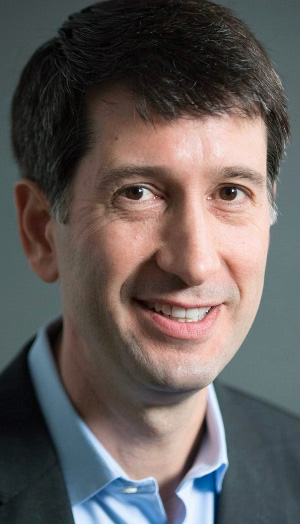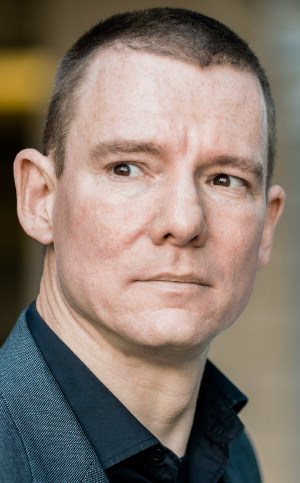

In October 2012, the Chairman and Ranking Member of the House Intelligence Committee issued a joint statement warning American companies that were doing business with the large Chinese telecommunications companies Huawei and ZTE to "use another vendor." The bipartisan statement explains that the Intelligence Committee's Report, "highlights the interconnectivity of U.S. critical infrastructure systems and warns of the heightened threat of cyber espionage and predatory disruption or destruction of U.S. networks if telecommunications networks are built by companies with known ties to the Chinese state, a country known to aggressively steal valuable trade secrets and other sensitive data from American companies." more
 There are two essential differences between the Uniform Dispute Resolution Policy (UDRP) and the Anti-Cybersquatting Consumer Protection Act (ACPA), one procedural and one substantive. The procedural difference is quite minor, a mere quirk that Panels adopted by consensus in the early days of the UDRP and deserves no more than a footnote. Under the UDRP, complainants have standing on proof that they have trademark rights when they file their complaints... more
There are two essential differences between the Uniform Dispute Resolution Policy (UDRP) and the Anti-Cybersquatting Consumer Protection Act (ACPA), one procedural and one substantive. The procedural difference is quite minor, a mere quirk that Panels adopted by consensus in the early days of the UDRP and deserves no more than a footnote. Under the UDRP, complainants have standing on proof that they have trademark rights when they file their complaints... more
 The Fund for Internet Research and Education - FIRE - is an initiative of AFRINIC that gives Grants and Awards to outstanding projects that use the Internet to provide innovative solutions to Africa's unique education, information, infrastructure, and communication needs. FIRE Africa is part of an initiative called The Seed Alliance that has LACNIC's FRIDA Program, APNIC's ISIF.Asia program, and the Internet Society as members. more
The Fund for Internet Research and Education - FIRE - is an initiative of AFRINIC that gives Grants and Awards to outstanding projects that use the Internet to provide innovative solutions to Africa's unique education, information, infrastructure, and communication needs. FIRE Africa is part of an initiative called The Seed Alliance that has LACNIC's FRIDA Program, APNIC's ISIF.Asia program, and the Internet Society as members. more
 We recently received an email from a customer asking about hybrid DDoS mitigation and its ability to stop large application layer attacks. Here's the truth: Hybrid DDoS mitigation works and can stop large application layer attacks. Hybrid DDoS mitigation typically involves a purpose-built DDoS mitigation appliance or software on dedicated hardware that sits immediately in front of or behind an enterprise's edge router. more
We recently received an email from a customer asking about hybrid DDoS mitigation and its ability to stop large application layer attacks. Here's the truth: Hybrid DDoS mitigation works and can stop large application layer attacks. Hybrid DDoS mitigation typically involves a purpose-built DDoS mitigation appliance or software on dedicated hardware that sits immediately in front of or behind an enterprise's edge router. more
 I've already shared my thoughts following a session of the IPv4 Sunset Working Group at IETF 95 that considered whether to declare IPv4 an "Historic" specification. Of course, as one would expect for a meeting of a Standards Development Organization (SDO), that wasn't the only standards process discussion through the week. Another session, this time in the IPv6 Maintenance Working Group, considered the related topic of whether to make the IPv6 specification a full Internet Standard. Let's look at that proposal. more
I've already shared my thoughts following a session of the IPv4 Sunset Working Group at IETF 95 that considered whether to declare IPv4 an "Historic" specification. Of course, as one would expect for a meeting of a Standards Development Organization (SDO), that wasn't the only standards process discussion through the week. Another session, this time in the IPv6 Maintenance Working Group, considered the related topic of whether to make the IPv6 specification a full Internet Standard. Let's look at that proposal. more
 In its bid to be free of U.S. government oversight ICANN is leaning on the global multistakeholder community as proof positive that its policy-making comes from the ground up. ICANN's recent response to three U.S. senators invokes the input of "end users from all over the world" as a way of explaining how the organization is driven. Regardless of the invocation of the end user (and it must be instinct) ICANN cannot seem to help reaching back and slapping that end user across the face. more
In its bid to be free of U.S. government oversight ICANN is leaning on the global multistakeholder community as proof positive that its policy-making comes from the ground up. ICANN's recent response to three U.S. senators invokes the input of "end users from all over the world" as a way of explaining how the organization is driven. Regardless of the invocation of the end user (and it must be instinct) ICANN cannot seem to help reaching back and slapping that end user across the face. more
 Earlier this week French supermarket giant E.Leclerc launched a new site for their sports' goods. The key change? The new site lives at sport.leclerc. Leclerc, which employs over 94 thousand people, is one of the companies that opted to get its own "dotbrand". While some companies have rolled out a variety of different things on their own domain extension it's still rare to see a brand launching anything with mass market appeal using their own TLD. more
Earlier this week French supermarket giant E.Leclerc launched a new site for their sports' goods. The key change? The new site lives at sport.leclerc. Leclerc, which employs over 94 thousand people, is one of the companies that opted to get its own "dotbrand". While some companies have rolled out a variety of different things on their own domain extension it's still rare to see a brand launching anything with mass market appeal using their own TLD. more
 Back in 2014, hundreds of new Top Level Domains (nTLDs) rolled out into availability. This means that the .com, .gov, and .org extensions that are typically used for business domains were joined by a multitude of other, more specialized extensions such as .attorney, .cars, and .recipes. As a channel partner, it's crucial to know how these new units will influence your presence online. more
Back in 2014, hundreds of new Top Level Domains (nTLDs) rolled out into availability. This means that the .com, .gov, and .org extensions that are typically used for business domains were joined by a multitude of other, more specialized extensions such as .attorney, .cars, and .recipes. As a channel partner, it's crucial to know how these new units will influence your presence online. more
 Over the last 20 years or so we have regularly revisited the developments in virtual reality (VR). I remember experiencing VR for the first time in the late 1980s, so this technology has been in the making for a very long time. And we are still uncertain about its growth over the next decade. There is no doubt that VR is going through a period of revival. more
Over the last 20 years or so we have regularly revisited the developments in virtual reality (VR). I remember experiencing VR for the first time in the late 1980s, so this technology has been in the making for a very long time. And we are still uncertain about its growth over the next decade. There is no doubt that VR is going through a period of revival. more
 A company called Rocketgate PR LLC, which owns a U.S. registration for the trademark ROCKETPAY, filed two UDRP complaints on the same date against two different domain name registrants - for the domain names
A company called Rocketgate PR LLC, which owns a U.S. registration for the trademark ROCKETPAY, filed two UDRP complaints on the same date against two different domain name registrants - for the domain names
 I have been having a number of conversations recently with several clients and colleagues about "semantics". It's clear that there is not a lot of clarity on this philosophical subject! Whilst is may be an obscure issue, it is a very important one. Our ideas lead us to take actions, and if we want those actions to have the consequences we had in mind, then we need to have done our epistemological homework. more
I have been having a number of conversations recently with several clients and colleagues about "semantics". It's clear that there is not a lot of clarity on this philosophical subject! Whilst is may be an obscure issue, it is a very important one. Our ideas lead us to take actions, and if we want those actions to have the consequences we had in mind, then we need to have done our epistemological homework. more
 It has often been claimed that IPv6 and the Internet of Things are strongly aligned, to the extent that claims are made they are mutually reliant. An Internet of Things needs the massively expanded protocol address space that only IPv6 can provide, while IPv6 needs to identify a compelling use case to provide a substantive foundation to justify the additional expenditures associated with a widespread deployment of this new protocol that only the Internet of Things can provide. more
It has often been claimed that IPv6 and the Internet of Things are strongly aligned, to the extent that claims are made they are mutually reliant. An Internet of Things needs the massively expanded protocol address space that only IPv6 can provide, while IPv6 needs to identify a compelling use case to provide a substantive foundation to justify the additional expenditures associated with a widespread deployment of this new protocol that only the Internet of Things can provide. more
 NTIA has published a Notice for Public comment that is titled "The Benefits, Challenges, and Potential Roles for the Government in Fostering the Advancement of the Internet of Things". This could become ICANN-2, bigger, longer, and uncut; and with a much greater impact on the future direction of the internet. However, my thoughts on this go well beyond the possibility of another ICANN. more
NTIA has published a Notice for Public comment that is titled "The Benefits, Challenges, and Potential Roles for the Government in Fostering the Advancement of the Internet of Things". This could become ICANN-2, bigger, longer, and uncut; and with a much greater impact on the future direction of the internet. However, my thoughts on this go well beyond the possibility of another ICANN. more
 Back in 1980 when I still lived in the Netherlands I worked with the Dutch futurist Griet Titulaer (an astronomer by trade) in building 'The Home of the Future'. I would say that at that stage it was more built around innovative interior design with automation features. Home entertainment also played a key role in it. At that stage these concepts had nowhere near the amount of technology that we are seeing in the homes of the future that we envisage today, but in essence lots of the elements we are still talking about were present then as well. more
Back in 1980 when I still lived in the Netherlands I worked with the Dutch futurist Griet Titulaer (an astronomer by trade) in building 'The Home of the Future'. I would say that at that stage it was more built around innovative interior design with automation features. Home entertainment also played a key role in it. At that stage these concepts had nowhere near the amount of technology that we are seeing in the homes of the future that we envisage today, but in essence lots of the elements we are still talking about were present then as well. more
 Even before the introduction of new top level domains in 2014, Panels had grappled with the before and after the dot issue with country code suffixes. The traditional procedure is to compare the characters of the accused domain names with the characters of trademarks for identity or confusing similarity. But this did not exclude the possibility of reading across the dot. more
Even before the introduction of new top level domains in 2014, Panels had grappled with the before and after the dot issue with country code suffixes. The traditional procedure is to compare the characters of the accused domain names with the characters of trademarks for identity or confusing similarity. But this did not exclude the possibility of reading across the dot. more
Sponsored byCSC

Sponsored byIPv4.Global

Sponsored byWhoisXML API

Sponsored byVerisign

Sponsored byVerisign

Sponsored byRadix

Sponsored byDNIB.com
